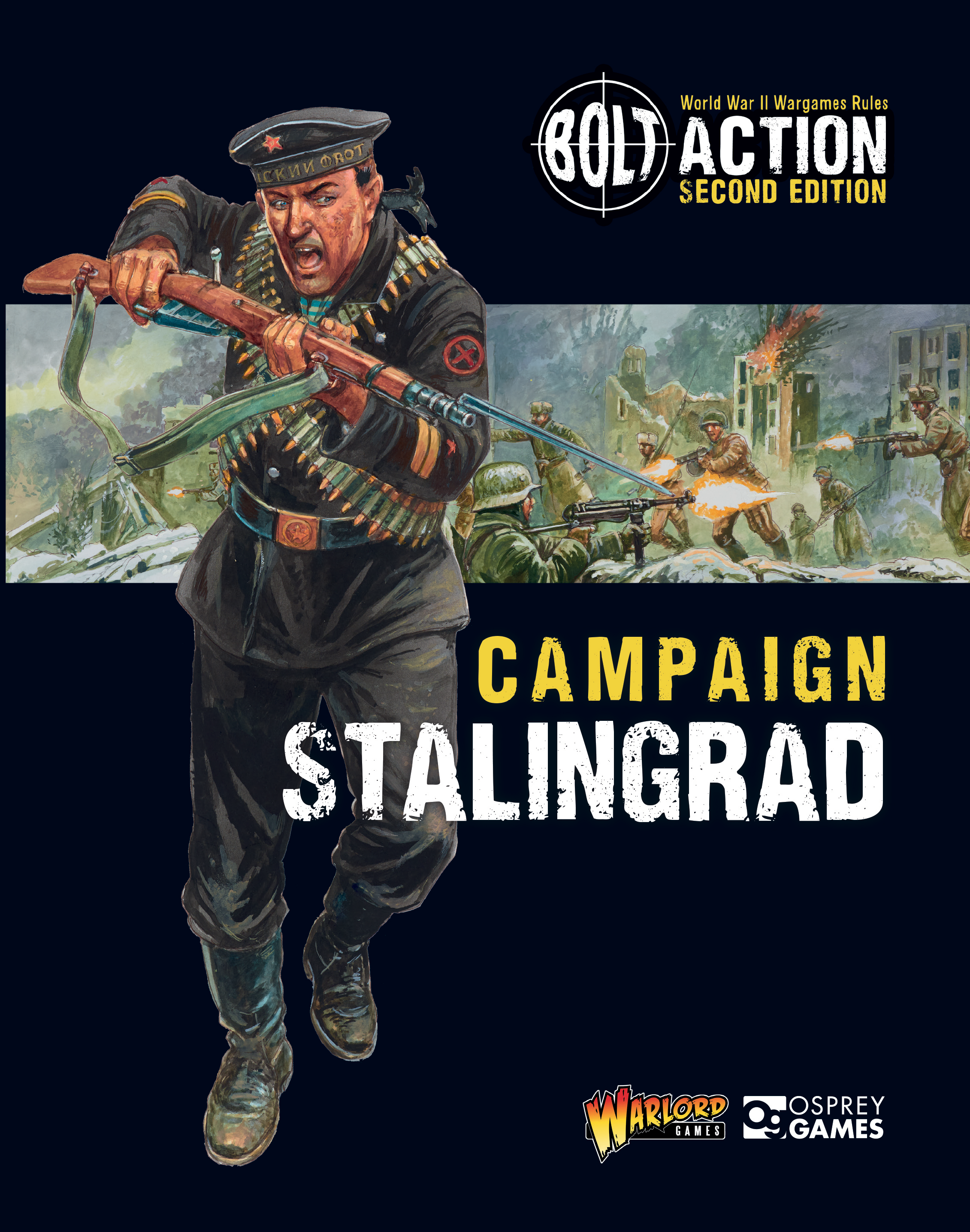Disclaimer: The supplement in this review was provided to Goonhammer.com by Warlord Games.
Stalingrad is one of the most iconic locations of the second world war, and one of the few from the Eastern Front to have gained much traction in western popular culture. Part of that is the sheer scale of the conflict – Stalingrad was a major city, and the forces that fought over it numbered in the millions. It was warfare of a kind not really seen before or since – urban warfare driven to its most extreme.
One of the things that’s easy to forget is that Stalingrad, though sometimes referred to as a siege or a battle, was really a campaign. The drives towards it, the capture and recapture, the repeated waves of reinforcement, and the fighting in the city itself became a whole military campaign embedded in a single constrained location. Over months fronts emerged, assaults were undertaken and sieges played out. A single street could be the focus of weeks of concentrated fighting, with a few metres of ground taking on the significance that a whole region might have in earlier warfare. Whole military operations, encirclements and ploys swirled around the city.
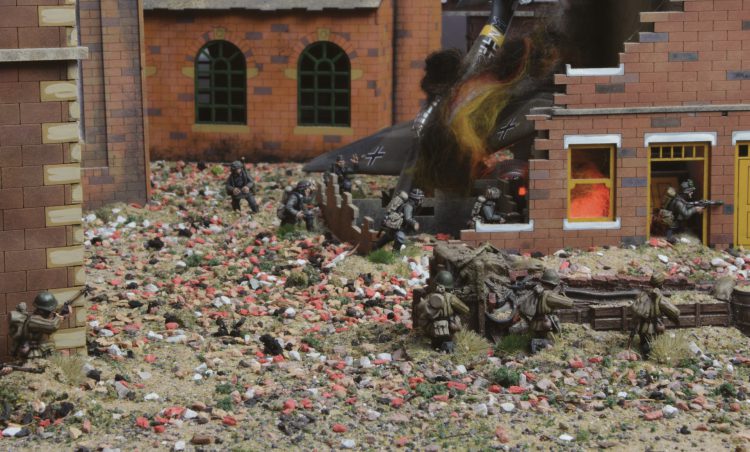
Warlord Games, recognising this and wanting to give Stalingrad the full treatment it deserves, have launched the Campaign Stalingrad supplement. This serves alongside their existing miniatures range, though they have released a special character miniature (Vasily Zeitsev) to support the supplement. The result is a competent effort, which covers the major arcs of the campaign well. It’s engagingly written, and the scenarios are well executed, but the final product lacks a sense of narrative.
The book is divided into three main sections: the campaign told broadly chronologically through background material and scenarios; and rules and options to support campaigns in Stalingrad.
The Campaign
The book opens with a timeline of events and an introduction to the book as a whole, and a brief overview of the events leading up to the campaign. The prelude here is very good, and begins a strong trend in the book of the historical writing being of high quality and engaging. The events are covered well and it’s a compelling read. By the time we launch into the scenarios we have a thorough grounding of the setting and the pieces that are in motion.
The scenarios that are provided are commendably varied; real effort has been made to make them different in terms of setting and also the way they play out. I was expecting a greater proportion of them to be urban set, but there’s a good variety here. The scenarios themselves also provide a good mix of play opportunities. I particularly liked the river crossing mission, with rules for watercraft, and the sniper duel mission which puts snipers at the heart of the game in an interesting way. Mostly these scenarios however are likely to play out as you expect – though there are interesting applications of game mechanics and even some new rules that broadly work well to emulate the feel of the fighting, none of them are dramatic or game changing. For many players this is probably a good thing, but I feel like these kind of campaign books are where a designer can really spread their wings a little and do something more daring, and it’s a shame to see that opportunity missed.
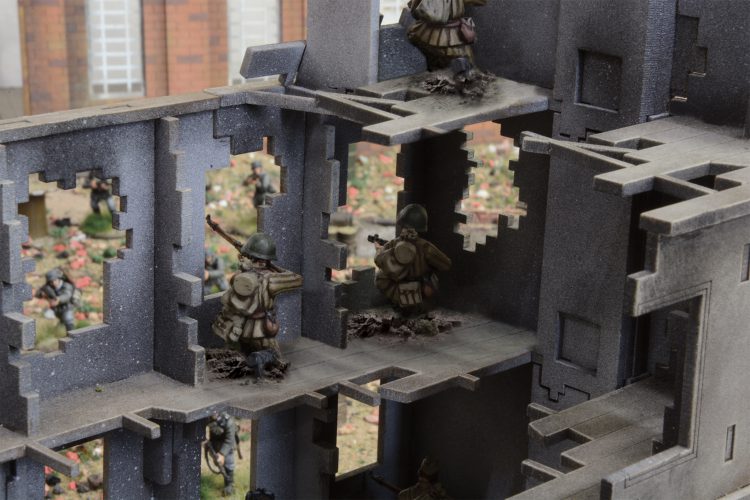
The big lack here is any sense of narrative. The downside of approaching this in a chronological manner, focusing in on the major campaigns and clashes, is that it deprives us of some of the benefits of a campaign like this, of following a specific group or unit through their fights. The campaign rules at the back are good, and I like the area control variant a lot (more on this in a bit), but it’s very much a collection of battles showing off the iconic elements of Stalingrad, more than a series of scenarios that tie together tightly into a narrative. This is a matter of taste, and ultimately there are advantages to this – you can pick out any one scenario and play it in isolation and it will work and feel cohesive. But when the campaign is ultimately about such an intensely personal and close up kind of warfare, it feels a sad miss to not have there be more personal attention.
The scenarios conclude with a summary of the aftermath of the campaign, and the way in which it impacted the rest of the war, which is well written like the rest of it.
The rules
Though there are a handful of rules and special units scattered throughout the campaign itself (most of which are suitable for specific missions and so presented alongside), the bulk of the new rules material can be found at the back of the book in its own section. I prefer this as it makes it much easier to reference.
The new rules cover new units and options for the armies involved; new theatre selectors for building platoons; scenario special rules; and rules for running linked campaigns with the scenarios and forces in this book.
New units
The Soviet units are, in my view, essential additions to the army and I would have honestly liked these to have been covered in the Armies of the Soviet Union book, but am pleased they are here. The Frontnik Commissar and Politruk entries in particular rectifies the broadly ahistorical portrayal of political officers from the core army book, placing them firmly in the role of morale management and inspiration as better fits their actual impact on soldiers around them. Allowing inexperienced squads they accompany to ignore the -1 to hit penalty for their inexperience is an excellent rule which really reflects the impact these officers had on the volunteer and conscription groups they commonly led.
The sniper units are a welcome addition too, allowing a player to better represent the marksmen specialties of the Soviet forces. The sniper detachment in particular, which represent the larger groups of snipers sometimes deployed, are a good addition. I’m less convinced by the student officer squad as a necessary inclusion – it feels like they could easily be modelled as standard green infantry squads rather than needing a separate entry. Storm groups however are an iconic part of the Soviet military that have been long-neglected, and are distinct enough in equipment and doctrine to deserve the entry they get here. I’m pleased to see that they can be taken in generic platoons too, giving a considerable boost to the variety available to Soviet forces. I like their Armed to the Teeth rule, which could be really nasty against dug in infantry.
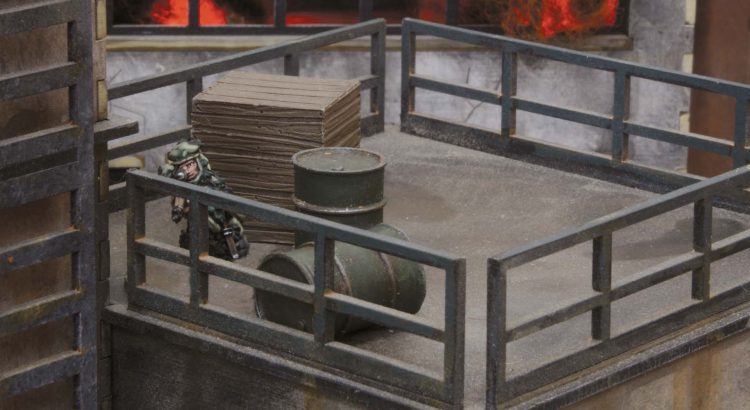
The lone vehicle included, the tractor factory T-34, is a flavourful inclusion but doesn’t feel as necessary as some of the others. It’s interesting in terms of game design to have tanks with customised weaknesses and flaws, but it does call into question the lack of representation of these in other tanks in the war (such as some of the late war German tanks which suffered from far worse defects than those portrayed here). Tanks in Bolt Action are, broadly, portrayed as being factory fresh and in ideal working order, and breaking that trend is odd for this one unit.
The German units are much less essential, and it feels strongly like they have been included as a balance for the Soviet options. The alarm unit could easily be represented by a green infantry unit, while the specific panzergrenadier squad shown here is such a minor change from the default it doesn’t feel worth representing mechanically. The Jager squad is a little more interesting, but again not something that isn’t easily modelled with the generic options in the army book.
The inclusion of Croatian units in the German selector is one of the oddest additions in this book. The treatment of smaller nations in Bolt Action in general is patchy, but this is one of the most egregious I can think of. The Croatian Army Special Rule is buried in the unit special rules for this one squad (which otherwise is effectively a standard German infantry squad), and it is very odd. I would rather they had called this out as an army special rule option, letting you field a full force, perhaps with the option to field mixed platoons of various nations fighting together (this would be very suitable here in particular).
The German vehicles are all boats, and I have very little to say about them – they’re absolutely serviceable and historically authentic, but they’ll see little use outside of one or two scenarios.
Romania also gets a single new unit here – the R-1 which is good to have included, as its absence before now was notable.
There are also three new options available to all armies. Messengers allow you to extend the range of an officer’s morale bonus and Snap to Action abilities, but only once. They are also easy targets, making them especially vulnerable. I don’t necessarily think messengers suit the scale of warfare being portrayed in Bolt Action, but these are serviceable if you do want such a thing on the table.
Demolition charges are an excellent addition that I like a lot more. They especially make sense in a crowded urban environment, and I think these are a good option for pioneer and assault engineer units. Rifle grenade adaptors for German infantry units sit solidly in the “fine” category, but I assume someone will be excited for them, even if they feel quite niche.
Theatre Selectors
There are 19 theatre selectors presented in this book – 9 for the Soviets, 8 for the Germans and 2 for the Romanians. Broadly they are as you would expect – tailored selectors for specific periods of the campaign, restricting your choices in a thematic manner. However, there are a couple that deserve looking at in more depth, because they offer genuinely novel and interesting platoons to play with.
The Soviet 1942 Anti-Tank Artillery Battery is a very unusual platoon, putting artillery units at the heart of the platoon. You must take two alongside your lieutenant, with infantry squads being entirely optional. You can also take an eye-popping four artillery guns which is enough to make any tank commander pause. I like this, because though you probably will opt to take at least one or two infantry squads, the option to lean into this thematic list is appealing and a nice addition.
The Stalingrad Armoured Kampfgruppe Reinforced Platoon is very interesting for the Germans, with compulsory choices of a panzergrenadier squad and a tank, making this a true hybrid platoon. This feels very flexible, and I’d be interested to see it in play, only let down a little by the requirement to take transports for each panzergrenadier group (despite almost all these formations historically fighting dismounted, meaning that transports should really be off the table rather than on).
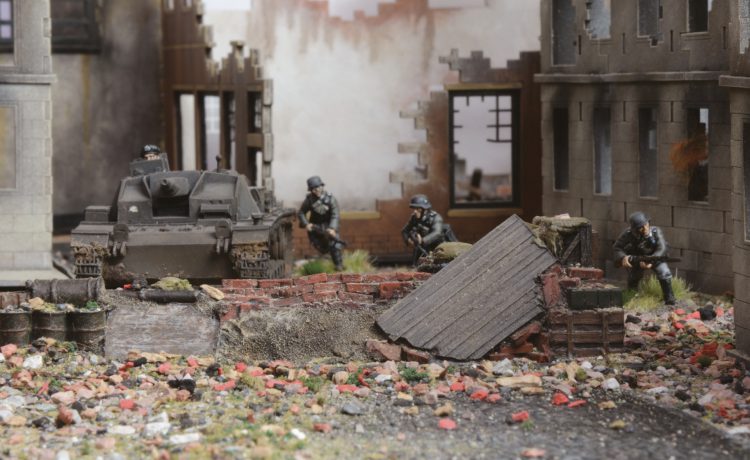
One thing that does jump out with the selectors presented for the Soviets is that only one of them allows you to take the Storm groups, which is extremely strange considering how core they were to much of the fighting in the city. I would have expected them to turn up in a couple of other selectors given this.
Scenario Special Rules
There are a selection of special rules presented in this book, many of which are good additions that can easily see wider use. Constant bombardment could make for some interesting scenarios in almost any theatre, while snow gives a board or area wide special rule that provides some interesting challenges.
The Dug In rules are meatier, and I broadly like them – units that are dug in will feel properly hard to shift, and rightly will reward some of the aggressive assault units that were fielded to extract units from these kinds of fortifications. As a rule that is used in setup, it’s a nice tweak to any scenario with a defending force, and I can see using these rules more extensively.
The fuel and ammunition shortages are less universal, and honestly a little pedestrian. They don’t seem to provide interesting decisions – they simply limit what you are able to do in a linear fashion. This is a shame, and a missed opportunity, especially since on the same page there are rules for supply drops… maybe there could have been interesting dynamics devised here to allow these rules to interact.
The city fighting rules are the most extensive new additions, and I’m glad to see them. There’s a special FUBAR table for urban warfare that’s rolled on when units get an 11 or 12 on an order test. The results are brutal, with units firing on each other by mistake, panicking in the face of the enemy and taking cover regardless of your intentions. This is nice, and I like the added level of chaos. Rules for rubble are… extensive, and though useful perhaps a little much. When you have multiple tables detailing how rubble impacts the game, you might have gone too far.
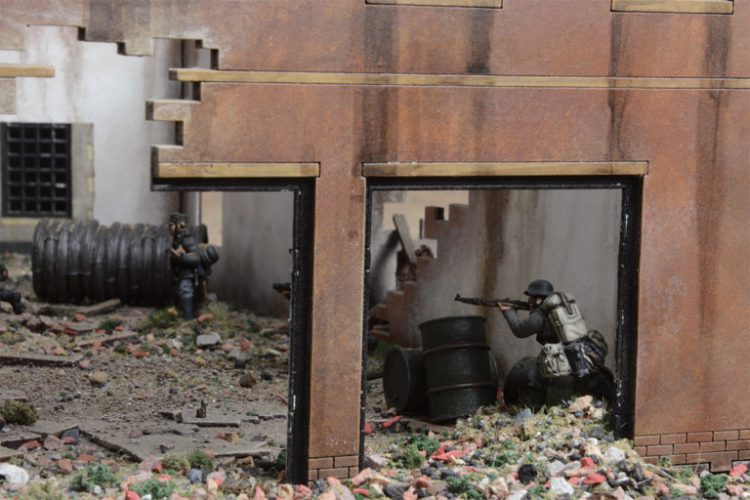
I do like the rules for building with multiple floors and sections (though these are not unique to this book) and for sewers. Sewers in particular provide an interesting new dynamic to movements and positioning, and units can move around and emerge from exits unexpectedly. Battlefield damage also lets you really rip that terrain apart, and that’s a nice touch, but ultimately it mostly just places craters and smoke clouds, rather than doing anything more substantial. This is an area where perhaps we could have taken half a page from the rubble rules and added a bit more meat.
Protracted battles are covered here, allowing for changing conditions over them, but I don’t think they’re likely to be used much – the structure of Bolt Action means that extending the number of turns tends to drag.
Campaign rules
Finally we get rules for running campaigns in Stalingrad and right away I like it because it’s a territory control campaign system and I’m an absolute sucker for them. They add a lot of nuance to the campaigns presented (there are four included here) by not making them purely territory control, but adding impacts based on the overall VP earned in games. In most campaigns this adds a clock to proceedings – if one side accrues enough VP, then the campaign ends in their victory as an operation is launched (Uranus, mostly). However, there are other interesting effects – enough VP and you start earning a better chance of choosing which territory to fight over, and determining some of the elements of what game is played. They also wisely limit the scenarios on offer to just those in the city itself.
I like these rules – they’re compact, elegant and interesting. I do think they highlight one of the wider issues however, in that by trying to represent the full sweep of the campaign, they’ve deprived themselves of more variety in the specific campaign rules. There are a limited number of missions presented here, because only some of the scenarios make sense – if they’d honed in a little more on urban warfare there would be a greater variety and this system would be even better.
This is good enough, frankly, to deserve more focus and attention, and I’d have liked to have seen it get more of the spotlight. However it remains an excellent addition, and I will likely borrow the mechanics for a campaign at some point even if I don’t play this one specifically.
Summary
This campaign is an odd beast, because it’s trying to do a lot of different things at once. On the one hand it’s a scatter of scenarios representing key kinds of fight or specific clashes in the campaign, with some rules to support them. On the other, it’s an excellent campaign system that falls down only where it is not fully supported by the rest of the content. There is well-written historical detail, but not enough to really satisfy those looking for the detailed strokes of the campaign, but it takes up a huge amount of the book if that’s not what you’re looking for. It’s a well-executed book, but I don’t know if it is sure what it’s for.
If you’re looking for inspiration and some cool scenarios for Stalingrad and the surrounds, this is a good purchase. But it feels like a sadly wasted opportunity – this could have had content shuffled around, or just had its page count expanded, and been a much more satisfying volume. Despite this, it’s hard to knock the quality of what’s here, and no specific element of it will disappoint, even if the overall picture is a little confused.
